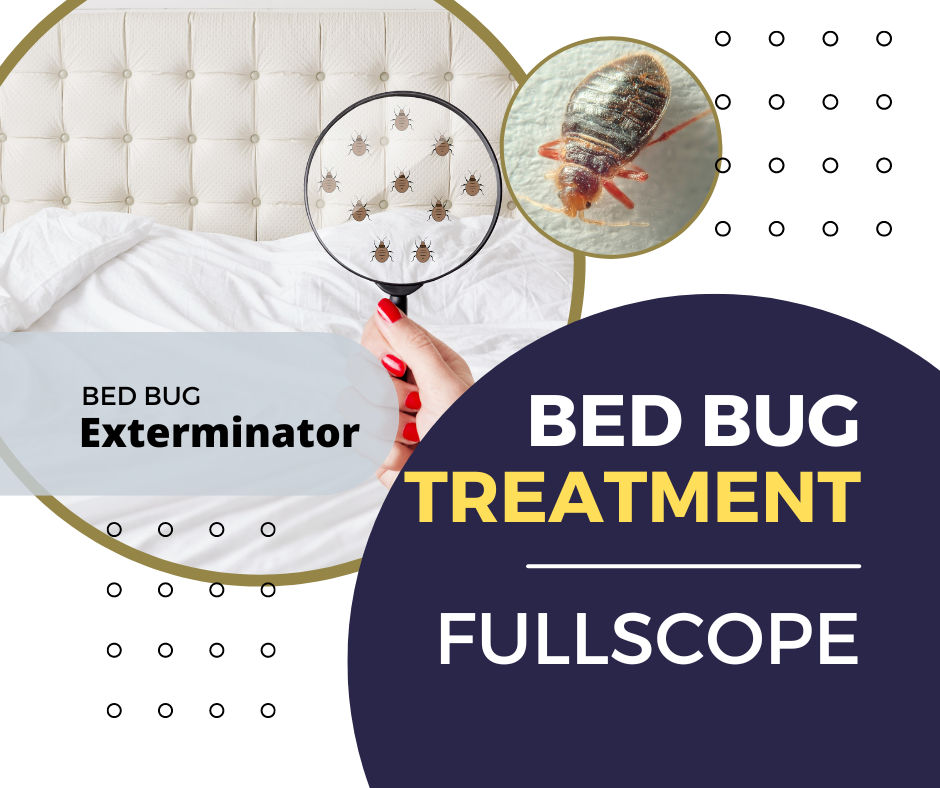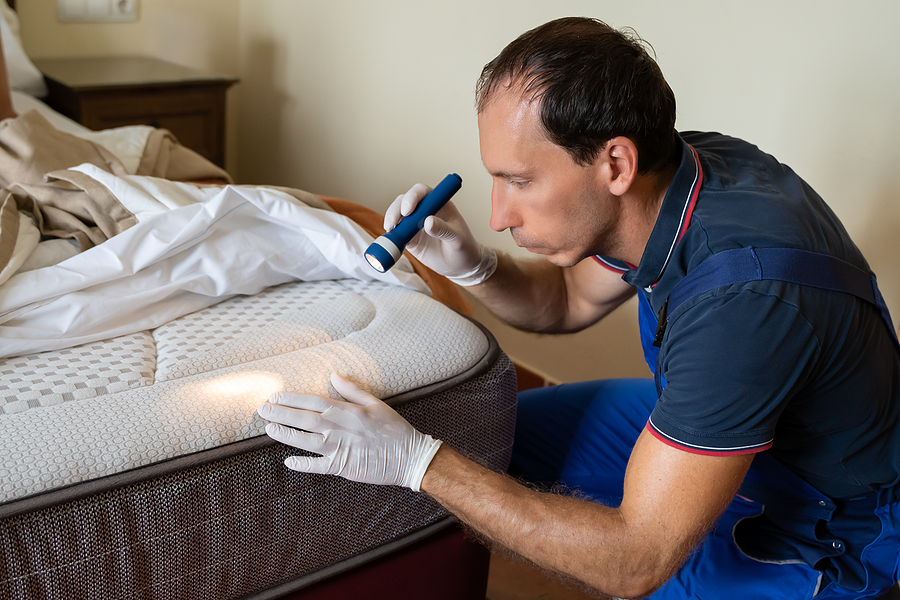Trusted Bed Bug Exterminator for Fast and Safe Elimination
Trusted Bed Bug Exterminator for Fast and Safe Elimination
Blog Article
Obtain Enlightened Concerning the Kinds Of Parasite Control Approaches and Their Benefits for Property Owners
Recognizing the different pest control methods available to home owners is vital for effective parasite monitoring. House owners who are educated can make critical options that not only address parasite concerns yet also improve the overall top quality of their living atmosphere.
Chemical Bug Control Approaches
Chemical bug control techniques are a crucial component of incorporated pest administration strategies for property owners seeking reliable solutions to pest infestations. These techniques include the application of chemical compounds designed to eliminate or deter insects that endanger individual building, health and wellness, and convenience. Common chemicals made use of consist of pesticides, herbicides, rodenticides, and fungicides, each customized to target particular insects.
The main advantage of chemical insect control is its rapid performance; numerous solutions give instant results, decreasing pest populations substantially quickly. Furthermore, advances in chemical solutions have led to items that are much more environmentally pleasant and have reduced toxicity degrees for non-target organisms when used appropriately.

Biological Parasite Control Techniques
All-natural parasite control approaches have actually gained prestige as home owners seek safer and more sustainable choices to conventional chemical techniques. Organic parasite control techniques utilize all-natural killers, bloodsuckers, or virus to take care of parasite populaces efficiently. This approach is not just eco-friendly but also decreases the risk of damage to non-target species, including advantageous insects and wild animals.
Among one of the most common organic control methods involves introducing all-natural predators into the atmosphere. As an example, ladybugs can be utilized to regulate aphid populations, while nematodes target soil-dwelling pests like grubs. Additionally, parasitoids-- organisms that live on or within a host-- can be used to control details bug varieties by laying eggs inside them, eventually causing their death.
One more strategy is using biopesticides, which are stemmed from natural products such as bacteria, minerals, or plants (bed bug exterminator). These items can successfully target bugs while positioning very little threat to humans and pets. On the whole, organic parasite control strategies supply home owners with a reliable methods of pest monitoring that lines up with ecological principles, promoting a much healthier living atmosphere while reducing dependence on artificial chemicals
Mechanical Bug Control Strategies
Mechanical insect control techniques incorporate a selection of approaches that literally protect against or eliminate pests without using chemicals. These techniques are particularly advantageous for property owners seeking environmentally pleasant alternatives while guaranteeing the security of their living areas.
One common technique is making use of barriers, such as nets, catches, and displays, which stop parasites from entering homes or certain locations. Setting up home window screens can efficiently keep pests out, while using physical obstacles around gardens can prevent larger pests like rabbits or deer. Additionally, mechanical catches designed for rodents can capture and eliminate these pests without the need for hazardous materials.
One more efficient approach entails the use of mops and vacuums to get rid of insects straight from surface areas. Normal cleansing and maintenance can significantly decrease pest populations by eliminating food resources and hiding places. Furthermore, utilizing devices like ultrasonic bug repellents can additional resources deter different pests through acoustic wave that are undesirable to them however faint to people.
Social Bug Control Practices
Cultural bug control practices focus on changing the setting and monitoring strategies to develop conditions that are less favorable to pest invasions. These methods are essential in keeping a balanced ecological community and lowering the reliance on chemical treatments. By altering agricultural methods, home owners can efficiently discourage insects while promoting plant health and wellness.
One usual approach consists of plant rotation, which interrupts the life process of parasites by transforming the types of plants expanded in a details area (bed bug exterminator). This not only lessens pest populaces but likewise enhances dirt health and wellness. In addition, intercropping-- growing diverse crops in closeness-- can perplex pests and reduce their capability to situate their favored host plants
Water management is an additional essential aspect of cultural techniques. Correct watering techniques can avoid standing water, which serves as a breeding place for mosquitoes and various other insects. Furthermore, keeping tidiness around the home, such as routinely eliminating debris and food waste, can considerably reduce parasite attraction.
Integrating these cultural practices right into a thorough pest monitoring strategy enables home owners to develop a setting that normally prevents parasites, consequently boosting the efficiency of various other control techniques while advertising sustainable gardening and landscaping.

Integrated Bug Management Approaches
Integrated Insect Monitoring (IPM) stands for local pest control an alternative method that integrates various techniques to effectively manage bug populaces while reducing environmental effect. This technique incorporates organic, cultural, physical, and chemical techniques to accomplish lasting insect control. By assessing pest populaces and their natural enemies, IPM stresses monitoring and identifying parasites before implementing control actions.
One of the core principles of IPM is using thresholds, which develop the degree of pest activity that warrants treatment. This ensures that treatments are used only when required, minimizing the reliance on chemical pesticides. Organic control approaches, such as presenting all-natural predators or bloodsuckers, operate in conjunction with cultural practices like plant turning and environment adjustment to interfere with pest life cycles.
In addition, IPM urges the use of least-toxic chemical choices when treatment is necessary, focusing on items that present minimal threat to non-target microorganisms and the setting. For property owners, embracing IPM approaches not just improves the efficiency of pest administration yet also promotes a much healthier living atmosphere, fostering biodiversity and decreasing chemical direct exposure. Eventually, IPM empowers home owners to make educated decisions that balance insect control with eco-friendly responsibility.
Verdict
In final thought, understanding the numerous termite prevention insect control approaches encourages homeowners to make educated decisions relating to pest administration. Each technique-- chemical, organic, mechanical, social, and integrated bug management-- provides distinctive advantages that cater to various needs and choices.
Understanding the various parasite control methods available to home owners is crucial for effective bug administration.Chemical bug control approaches are a critical element of incorporated insect monitoring strategies for homeowners looking for effective services to pest invasions. In general, biological parasite control strategies supply homeowners with an efficient means of pest management that lines up with ecological concepts, promoting a much healthier living setting while lowering dependence on synthetic chemicals.
Social parasite control techniques concentrate on changing the setting and management techniques to create conditions that are much less favorable to pest problems.In conclusion, comprehending the various insect control methods encourages home owners to make informed decisions relating to pest administration.
Report this page